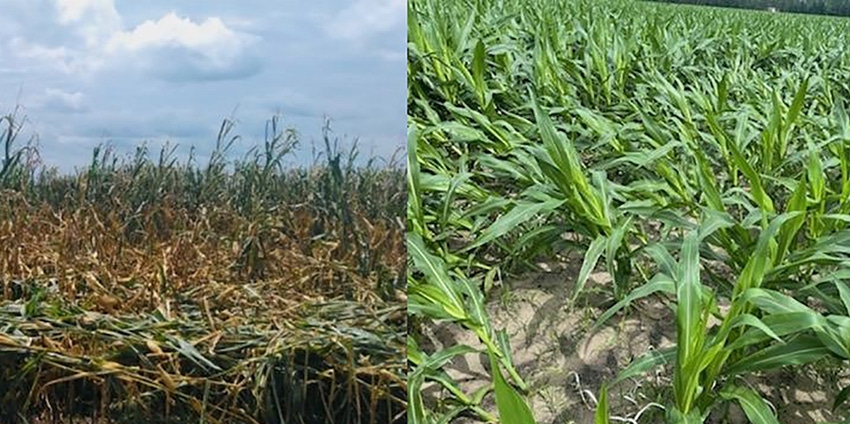
Elsa, the first hurricane of the 2021 season, skirted up Florida's west coast July 7, bringing heavy rain and winds. Early reports indicate the storm didn't treat northeast Florida row crop farmers kindly, but it could have been worse.
De Broughton is the University of Florida Extension regional agronomic agent for the Suwannee River Valley located in the northeastern part of the state. July 8, she was already in contact with about dozen corn growers in the region.
"(Talking) with (corn) growers across the Suwannee River valley, and 80% of them have reported minimal wind damage so far. Low percent affected. What has blown is leaning and will likely pick back up before harvest with some sunshine and clear days," she told Southeast Farm Press.
About an hour northwest of Gainesville, one particularly bad spot was in Lafayette County, where she reported 65 acres of corn blown over. "(Elsa) also devastated tobacco crops in Lafayette County with 30% loss."
July 9, Broughton said, some Levy county growers reported a disease issue in corn, which "became obvious after the storm with lodging."
Andy Robinson and his brother Scott don't grow corn but do grow peanuts in Levy County about 30 miles south of Gainesville.
"A lot of rain. We'd already had about 5 inches of rain over the last week, and then we got another 6 inches to seven inches from the storm (Elsa). Fortunately, our sandy soils soak it up really quickly. Haven't seen any ponding in the fields yet, but I've got a couple of places I haven't checked yet," Robinson said in July 8 text to Southeast Farm Press.
"Irrigated peanuts looking good. Some of the early dryland peanuts still look a little behind. We had one good rain early in June and that probably saved some. Normal rains didn't really get started until about two weeks ago, and now we're running above normal. As one of my friends said yesterday, "Farming ain't for sissies."
True.
Check back here for updates on Elsa's impact on Southeast agriculture.
Read more about:
ElsaAbout the Author(s)
You May Also Like






